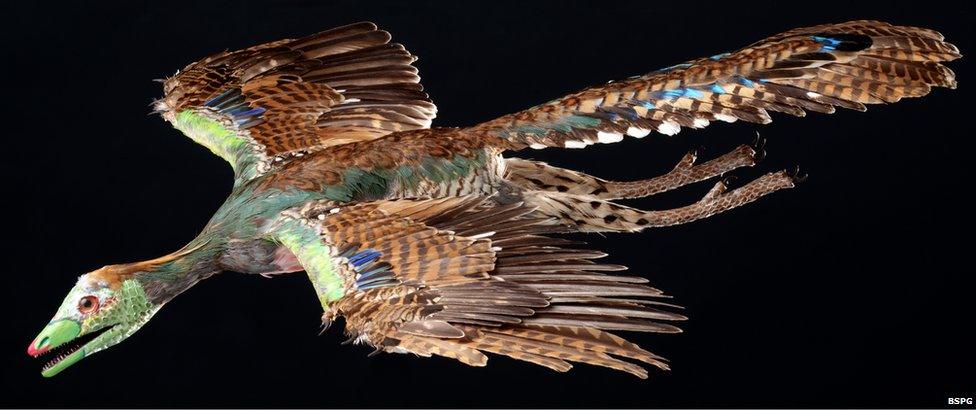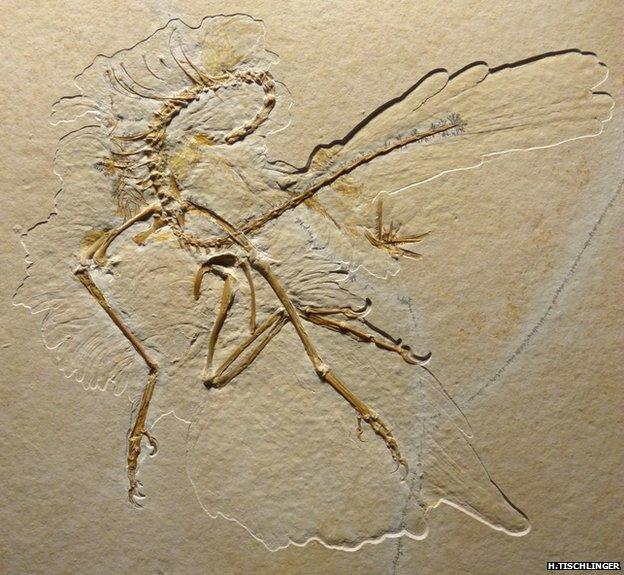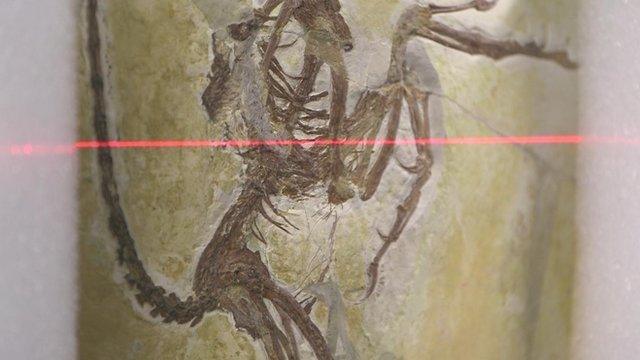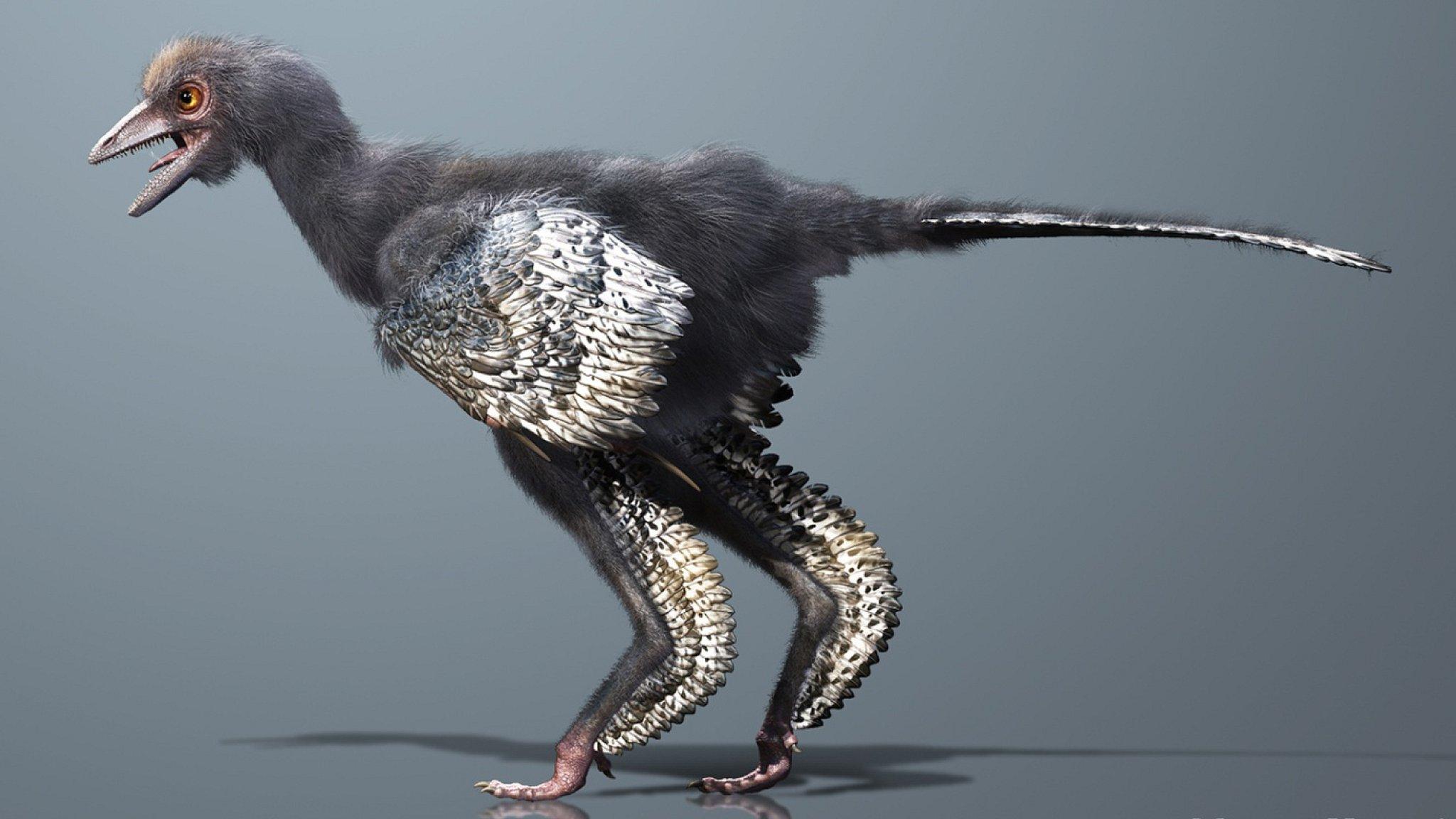Early bird Archaeopteryx 'wore feather trousers' for display
- Published

An ancient creature halfway between a dinosaur and a bird had feathered "trousers" on its hindlimbs.
Archaeopteryx had pennaceous (quill-like) feathers all over its body, not only its wings, a new fossil - only the 11th of the creature found - reveals.
These "trousers" were probably used for display, say scientists from Germany, writing in Nature journal, external.
Their discovery adds weight to the theory that feathers originally evolved for purposes other than flight.
Flight mystery
Archaeopteryx caused a major stir when the first fossil was unearthed in Germany in 1861 - just two years after Charles Darwin published On The Origin of Species.
With the claws and teeth of a dinosaur, but the feathers of a bird, it was clearly a transitional form - apparent proof of Darwin's theory.
Its German name "Urvogel" means "first bird".
And though earlier bird-like dinosaurs have been unearthed since, many scientists still believe Archaeopteryx was the first capable of "flight" as we know it today.
The 11th fossil specimen was announced in 2011 and is remarkably well preserved, with detailed impressions of feathers all over its skeleton. The feathers are long and symmetrical on its upper leg and shorter lower down.

The skeleton is remarkably well preserved, showing detailed impressions of feathers
Previous specimens had shown some evidence of feathered hind legs but this "completes the picture", according to Dr Oliver Rauhut and colleagues at the Bavarian State Collection for Palaeontology and Geology.
These "trousers", as he describes them, may have been used for display, camouflage, insulation, brooding and manoeuvring while on the ground.
They were not primarily designed for flight but might have helped steady the bird during landing, similar to the hindlimb feathers of hawks, eagles and other modern raptors.
The wing feathers of the new specimen show robust shafts - further evidence that the "first bird" really could fly.
Recent studies assuming limited flight ability in Archaeopteryx "might be in error owing to the poorer preservation quality of the feathers," said Dr Rauhut.
"I'm pretty sure it could fly. Though of course there is still a debate about how well it could fly," he told BBC News.
The trousers are also a new clue to the mystery of how flight evolved in modern birds.
Traditionally it was thought that feathers and flight evolved hand in hand.
But the wide variation of plumages in early birds and feathered dinosaurs suggests that feathers first arose for a different purpose, said Dr Rauhut.
"Given the great diversity of pennaceous feathers found within different body regions and across the phylogeny, it seems plausible that the evolution of this feather type (especially in the wing, hindlimbs and tail) was primarily driven by display functions," he wrote in Nature.
Only later were these feathers recruited for flight - which may have arisen many times in parallel in different feathered species, he said.

The feathered "trousers" on the hind legs are clearly visible
- Published22 May 2014

- Published27 July 2011

- Published1 August 2013

- Published29 May 2013

- Published11 May 2010